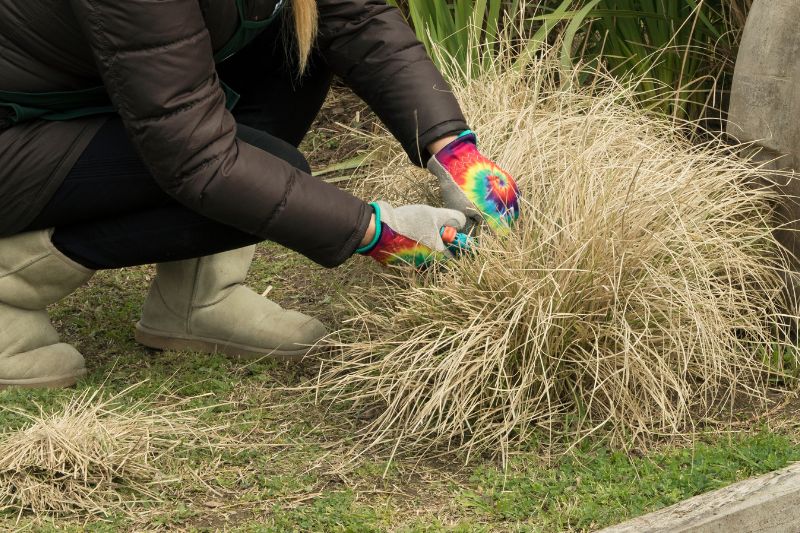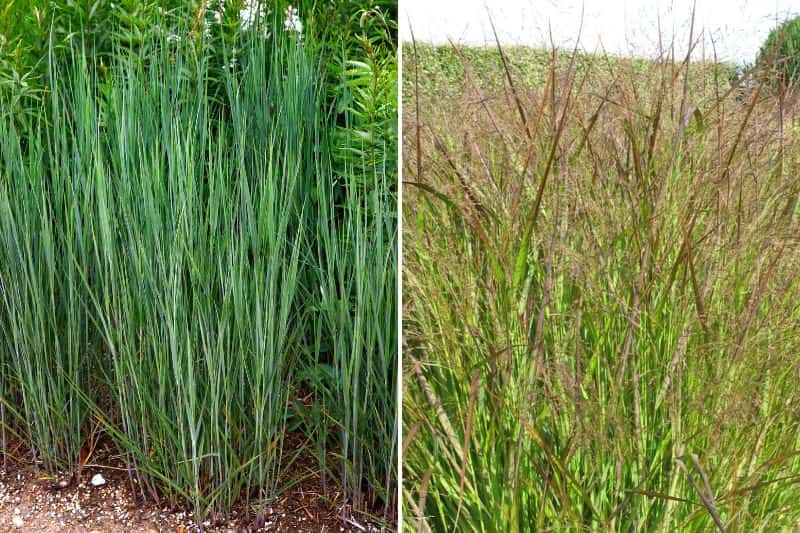The Panicum, also known as switchgrass, is an ornamental grass, native to North and Central America. This perennial plant, with its upright habit, offers deciduous foliage and beautiful, airy inflorescences in late summer, adding movement and elegance to flower beds. This tall grass can reach a height of between 1 and 1.5 metres, depending on the variety. Among the varieties, you'll find the Panicum virgatum 'Heavy Metal', with its bluish foliage, and the Panicum virgatum 'Squaw', which turns a beautiful reddish-purple in autumn.
Pruning the Panicum helps keep your plant vigorous, encourages new shoots, and prevents the accumulation of dry stems that can slow its growth. Discover, in this tutorial, all our tips for pruning your switchgrass.
When to prune switchgrass?
The best time to prune Panicum is in late winter, from late February to early spring, around mid-March (or late March for colder regions), just before the new young shoots appear. If you live in a mild climate, you can wait until February to prune.
Do not prune in autumn, as its dry foliage protects the base of the plant from winter frost and provides shelter for small animals during this season. The leaves also remain decorative throughout winter.
Why prune switchgrass?
Pruning Panicum has several benefits:
- Stimulate growth: by removing dry stems, you encourage the emergence of new shoots.
- Improve flowering: an annual cut ensures abundant flowering from August to October, when its decorative panicles (flower spikes) appear.
- Maintain a tidy appearance: pruning each year prevents the accumulation of old, dry foliage debris and avoids a neglected look.
- Prevent diseases: removing dead parts of the clump reduces moisture at the heart of the plant, limiting the risk of fungal diseases and parasitic infestations.
- Add lightness to the garden: thanks to its new fine and flexible foliage.
How to prune Panicum?
Prepare your tools:
- a pruning shear, shears, or a well-sharpened and clean hedge trimmer.
- Gloves to protect your hands, as the leaves can be sharp.
Follow these simple steps to prune your grass properly:
- Ideally, choose a dry day to limit moisture and make your work easier.
- Cut the dry stems to about 10 cm from the ground, being careful not to damage the new shoots.
- Gently remove the remaining dry stems by hand to avoid damaging the new shoots.
- Check the base of the plant and remove any dead parts.
- Clear the debris by gathering the dead stems and leaves around the base of the plant, then place them in the compost bin.

After pruning: switchgrass care
- Watering: After pruning and if the soil is dry, water lightly to help the plant restart. After that, little water is needed, as this grass tolerates drought well, especially in summer.
- Mulching: Add mulch around the base of the Panicum to protect the roots and retain moisture.
- Fertiliser: In April, add a little compost at the base of the plant to promote healthy growth.
- Division: Every 3 to 4 years, divide the clump to rejuvenate the plant and obtain new shoots. To learn more, read our article: How to divide an ornamental grass?
- Repotting: For potted plants, repot every 2 to 3 years to maintain their vigour.
To learn more about Panicum
To deepen your knowledge of Panicum and its care, we recommend the following articles:
- Panicum: planting, growing, dividing, and caring
Discover essential tips for planting, growing, dividing, and caring for Panicum. - Choosing a Panicum
This article guides you in selecting the right switchgrass for your garden or terrace, considering criteria such as size, foliage colour, and various possible uses. - Panicum: the best varieties
Discover a selection of the most beautiful Panicum varieties, with detailed descriptions to help you choose the one that best suits your garden.

































Comments